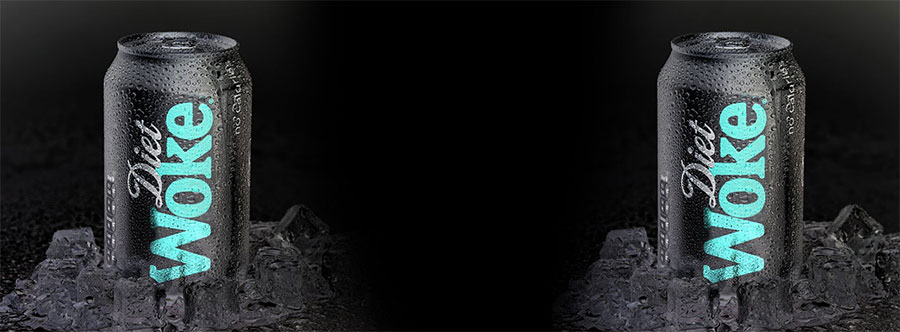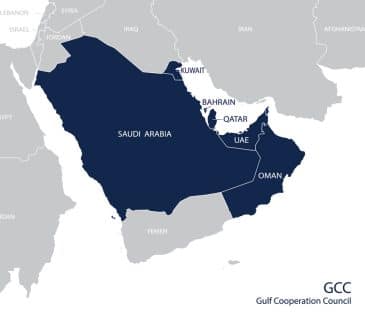Woke. It’s the Real Thing: An Optimistic Outlook on Authentic Diversity in Advertising.

At a time when everyone on Twitter seems perpetually pissed off and many are so left they’re right, I hope you’ll bear with me as I wade into turbulent waters and try to share a few objective, unbiased and (dare I say) optimistic observations on new trends regarding diversity and inclusion in our industry.
I know. Do we really need another voice on this topic? Maybe not. But it’s hard not to speak up when even the Rainbow Flag – the official OG symbol of diversity – is being scrutinized as not inclusive enough and in need of amendment.
So, why don’t we put down our pitchforks, discuss some of these sensitive subjects together and explore what we can do to approach advertising in a more “woke” way?
Purple People (Art)
Let’s start with that Rainbow Flag. Some have proposed the addition of different shades of brown, arguing that it will provide broader representation. But these critics seem to forget the whole point of the flag in the first place was to avoid human skin tones and, therefore, encompass all of us by showcasing none. Put another way, the rainbow is meant to show all the colors of the spectrum – not a variety of literal skin colors.
Apple seems intent on expanding their emoji library beyond the unnatural shade of “default yellow” with new skin tones and genders in each update. It’s a seemingly big win for gingers (am I allowed to use that term if I’m not one?), but emojis will never be able to capture the full spectrum of human physical characteristics and represent everyone.
In an attempt to avoid inevitable disappointment, many brands are now trying to find the perfect “we aren’t racist” hue and pivoting to full-Avatar mode in how they depict us. I’m not just talking about those T-Mobile Animoji ads, but a broader Purple People movement.
For those of you brave enough to test your illustrative woke-ness, Meg Robichaud offers a deeper dive into traversing inclusive illustration.
Questions like “Is your illustration depicting stereotypical gender roles?” not only reveal what an accidentally offensive drawing looks like, but what it’s actually saying. If drawing isn’t your thing, www.humaaans.com makes it easy to mix, match and create your own illustrated army of inclusion.
As a boy – sorry, person – who grew up at the peak of the Pamela Anderson era (one of the most dysmorphic feminine body idols of all time), I can’t help noting that advertising today often features the inverse. A quick visit to dribbble.com/urancd/ illustrates just what I mean. And remember Apple’s holiday ads featuring people with shrunken heads and Rubenesque bodies? Others have pioneered similar visual styles in a revolt against the exaggerated proportions of Bratz dolls by taking it to an equal-but-opposite anatomical extreme.
Gender Detox
The #MeToo movement exploded far beyond its Hollywood roots into mainstream corporate culture to keep us mindful of all the work that still needs to be done for gender equality. Last year’s Oscar-nominated motion picture, “On the Basis of Sex,” depicting the life and accomplishments of Ruth Bader Ginsberg (aka “The Notorious RBG”), has become a touchstone for many who weren’t even born when she was appointed to the US Supreme Court.
The introduction, proliferation and acceptance of these gender-centric political conversations has given some of America’s most traditional and, thus, risk-averse brands the courage and confidence to put their necks and ad budgets on the line. Earlier this year, Gillette addressed toxic masculinity in a new digital ad campaign that reframed their classic tagline to ask, “Is This the Best a Man Can Get?” in an attempt to shave men of traditional gender roles as an excuse for bad behavior.
But then we have Victoria’s Secret; that relic of female objectification in an age when most brands have evolved from promoting beauty for beauty’s sake to singing the praises of wellness as true beauty. Alas, the tone-deaf executives of the Victoria’s Secret Fashion Show – the world’s most expensive infomercial for lingerie – refused to let Miss Universe of Spain, Angela Ponce, walk down the runway because she’s transgender.
Outrage from social media-savvy consumers was overwhelming and provided a painful lesson for those at VS who misjudged who their best customers are and what they expect. Baby Boomers (who first made Victoria’s Secret a success) may not have changed much, but they’re not buying much at VS stores these days either. Gen Z, on the other hand, is not afraid of diversity or defying traditional norms; a sign of the fashion industry’s need to abandon the idea of “the male gaze.”
Our Friends Are Now Ads
Like it or not, we now live in a swipe-left world, resistant to and sometimes repulsed by disingenuous sales pitches and ivory tower promises. Today’s consumer has the digital tools and personal control to demand we deliver what they want, when they want it, in a transparent and relevant way. Content creation is less about promoting and more about connecting – directly, truthfully and authentically. That means creating more personally compelling, emotionally engaging messages that convey a sense of inclusion, and insinuating them into content your prospects are already consuming. Less push, more pull.
Smirnoff’s launch of non-GMO vodka featuring diverse LGBTQIA+ celebrity endorsements reached millions of progressive people through progressive content platforms like GIPHY. Who would have thought those cute GIFs you send for additional comic flair in your DMs would become a place for brands to sneak in their content? Opportunistic? Maybe. Authentic? Yes.
Snaps also for Visit Seattle, whose marketing team is in tune enough with today’s marketplace to recognize what powerful influencers drag queens can be and featured RuPaul’s Drag Race winner, Jinx Monsoon, in its recent sponsored InstaStories. I’ve even spotted billboards for Harry’s Razors with Shea Coulee as its smooth spokesface; a fabulous sign that smart brands are willing to erect 30-foot tributes to inclusivity.
Raising the Bar (and Previously Barred)
The importance of reflecting diversity in advertising is now being recognized by every smart marketer, from iconic brands like P&G (who’ve purchased multi-cultural companies like Walker & Company) to global publishers like Vogue and photography resources like Nappy and Broadly.
As a result, those of our society who were previously marginalized and considered little more than siloed micro-targets now have a growing voice in the consumer marketplace. Some of the barriers to being part of the collective consciousness have lifted and the stranglehold of stalwart advertising giants unwilling to evolve is loosening, as consumers divert their attention – and market spending – toward more authentic brands and content providers who understand them.
As Bill McCool so eloquently put it in this year’s Dieline Trends Report: “A brand is no longer an extension of our identity; it’s something that can be aspirational and forward-thinking. Nor is it just a reflection of our values; it’s a declaration about the communities we inhabit and participate in, the world we want to be a part of.”
One of the best examples of this principle may be Samsung’s new #DoWhatYouCant rallying cry, which mainstreams the marginalized, beautifully and unapologetically.
Get Real
If there’s one thing all of these examples teach us, it’s this: You can’t fake authenticity. You either care (sincerely) about a particular subset of citizens or you don’t. If you don’t, just leave them alone. But if you do care – and want to build a legitimate, lasting relationship with them – then make sure you’re offering content and opportunities that are real and relevant and respectful.
Forcing it can cause everything to go horribly wrong for even the most experienced marketers. Just ask Calvin Klein Brands, a longstanding advocate, who’ve been accused of “queer baiting” for using a model that does not identify as gay kissing a CGI influencer and later apologized for their missed attempt to show their support.
I also encourage you to recognize and reward those marketers who are doing it well and try not to persecute those who falter in their attempts! AdAge just added a Diversity & Inclusion champion of the Year award category to their Annual Lists and Modern Impact is intent on eventually earning a place on it. But every marketer that does will probably do so a little differently. After all, you can’t value diversity and then expect everyone to be the same.
As comedian, Wanda Sykes, argues so perfectly in her Netflix special, when people attempt to be PC by saying we’re all the same: “No, we’re not. We’re not all the same. We’re different. But we’re equal. And that’s the thing. That’s what we have to respect.”
Written by Dominic (Heintz) Friend.
Have you read?
# World’s Top 50 Universities For Arts and Humanities Degrees, 2019.
# World’s Top 50 Universities For Education Degrees, 2019.
# World’s Top 50 Universities For Social Sciences Degrees, 2019.
# World’s Top 50 Universities For Business And Economics Degrees, 2019.
# World’s Top 50 Universities For Engineering And Technology Degrees, 2019.
Add CEOWORLD magazine to your Google News feed.
Follow CEOWORLD magazine headlines on: Google News, LinkedIn, Twitter, and Facebook.
This report/news/ranking/statistics has been prepared only for general guidance on matters of interest and does not constitute professional advice. You should not act upon the information contained in this publication without obtaining specific professional advice. No representation or warranty (express or implied) is given as to the accuracy or completeness of the information contained in this publication, and, to the extent permitted by law, CEOWORLD magazine does not accept or assume any liability, responsibility or duty of care for any consequences of you or anyone else acting, or refraining to act, in reliance on the information contained in this publication or for any decision based on it.
Copyright 2024 The CEOWORLD magazine. All rights reserved. This material (and any extract from it) must not be copied, redistributed or placed on any website, without CEOWORLD magazine' prior written consent. For media queries, please contact: info@ceoworld.biz
SUBSCRIBE NEWSLETTER








